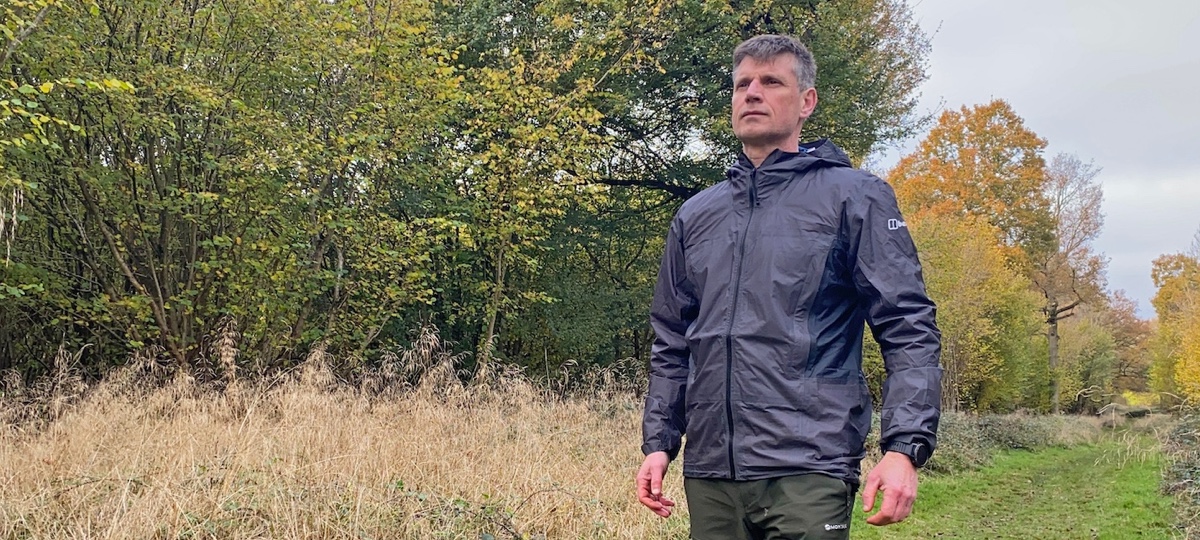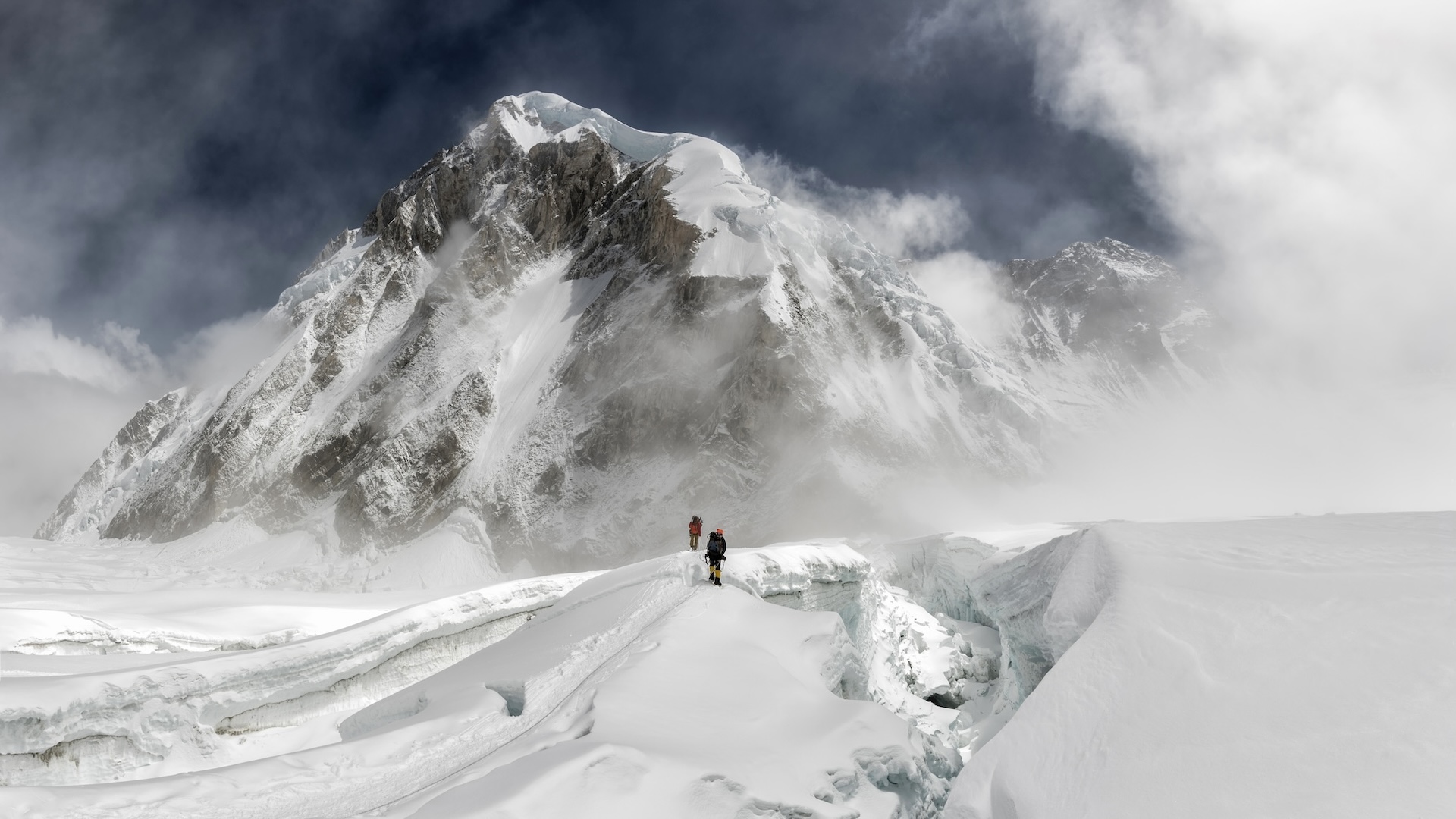Advnture Verdict
Particularly well-suited for rock climbers and trail runners active in the unpredictable conditions prevalent during the shoulder seasons, the Berghaus MTN Guide Hyper Alpha jacket is breathable, warm and reliably water- and wind-proof. The innovative Polartec panels alsoprovide a level of insulation that you just don’t see in other outer shells.
Pros
- +
Super light
- +
Waterproof and breathable
- +
Warm interior paneling
- +
Harness and pack-friendly pockets
- +
Comes with stuff sack
Cons
- -
No underarm pit vents
- -
Limited colors
- -
Flimsy hood
- -
No recycled content used
You can trust Advnture
Berghaus MTN Guide Hyper Alpha: first impressions
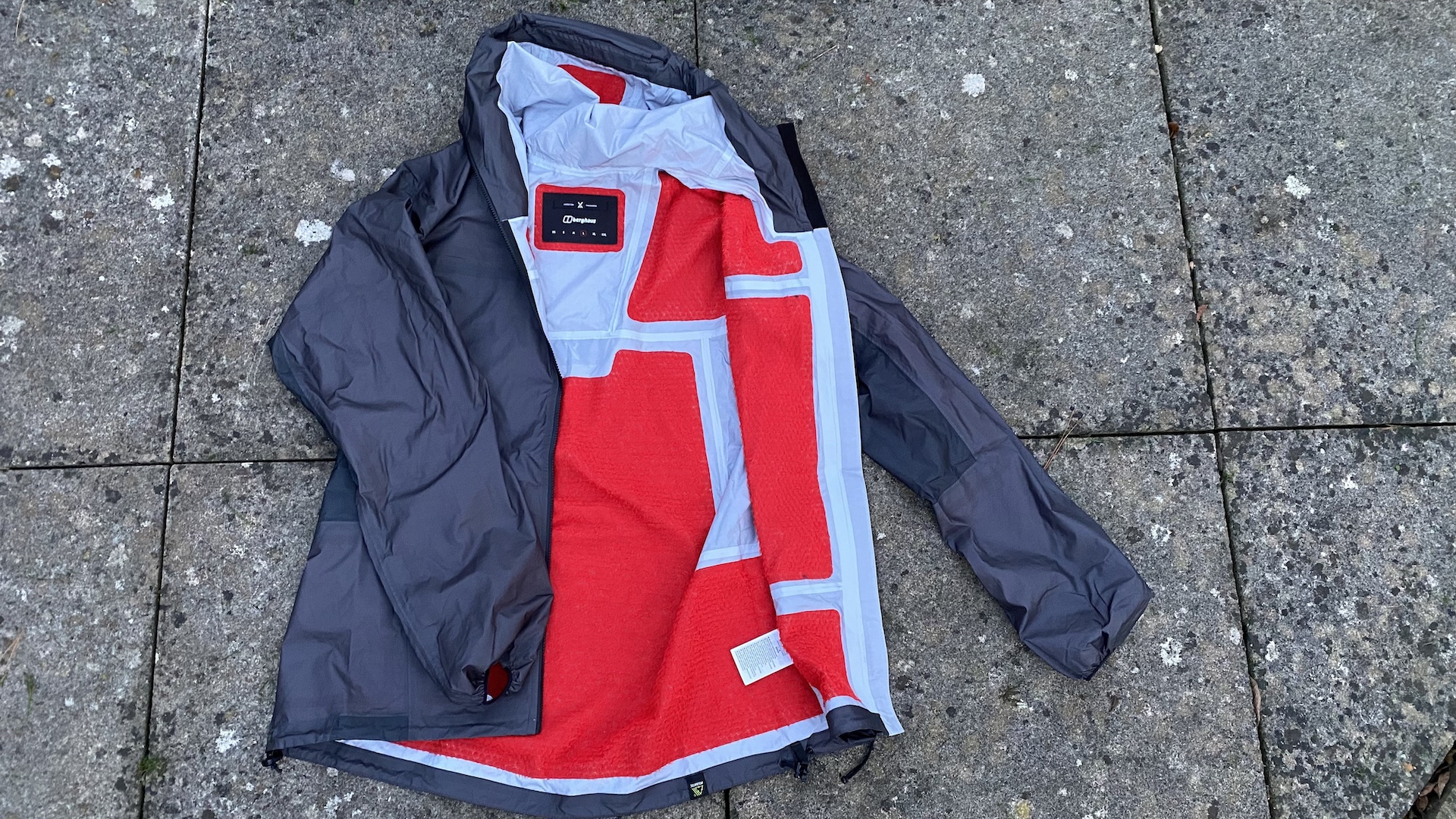
At first sight, the Berghaus MTN Guide Hyper Alpha looks similar to many other lightweight shell layers, but when you open it up you’re in for a surprise: the interior is lined with a thin, fleecy material, designed to provide some extra warmth to your sides, back and arms.
It’s an unusual look – not least because this fluffy stuff is bright red, which contrasts dramatically with the rather gloomy gray-and-black colorway that the men’s version of the coat comes in. But no-one can see the inside when you’re wearing the jacket.
So the more important question is: does it improve the garment’s performance? There was only one way to find out, so I hit the chilly rain-strafed trails and put it to test, to see how it compares with the best waterproof jackets on the market.
Berghaus MTN Guide Hyper Alpha: design and materials
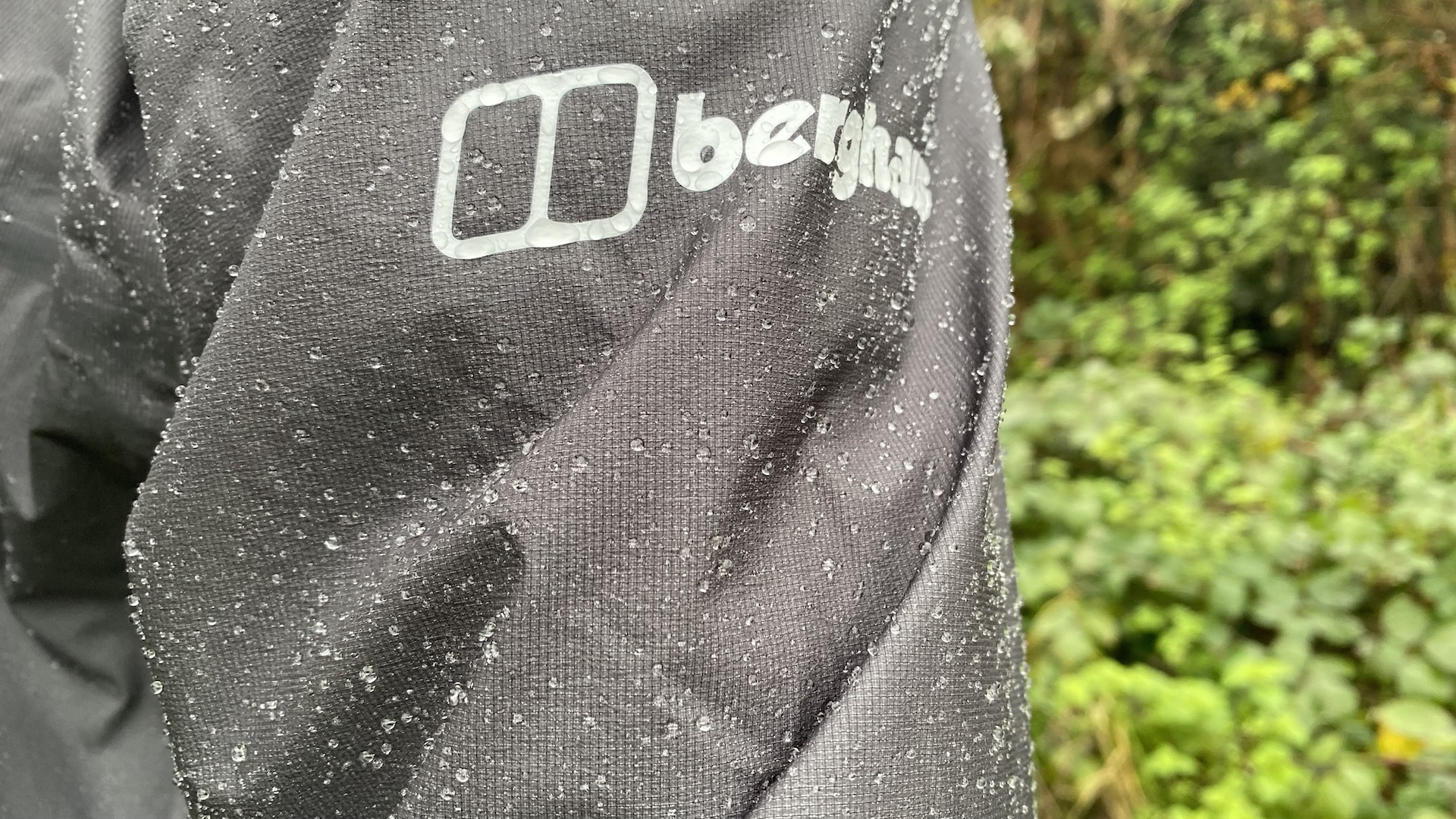
• List price: £290 (UK) / €300 (EU)
• Versions: Men’s / Women’s
• Sizes: Men’s: XS-XXL; Women’s: XS-XXL
• Waterproof rating: 12,000mm HH
• Breathability rating: 50,000+ g/m2/24hrs
• Materials: Hydroshell Elite with Polartec Alpha panels (100% polyamide / 100% polyester)
• Weight (Men’s large): 9.25oz / 262g
• Colors: Gray & Black (men's); Women’s: Black / Goji Berry & Jet Black (women's)
• Compatibility: Hiking, trekking, climbing, fastpacking, winter trail running
The outer layer of this Berghaus jacket is made with the brand’s Hydroshell Elite fabric, an impressively lightweight, 2.5 layer, PU-based waterproof and breathable membrane-based material with a hydrostatic head rating of around 12,000mm. Designed for dynamic activities such as climbing and mountaineering, Hydroshell Elite fabric offers 6D ripstop durability and it scores very well for breathability during lab tests (something that could be affected by the addition of fleece panels).
British brand Berghaus have built a whole range around this material, but what’s more surprising and innovative about this particular jacket is the use of Polartec Alpha fleece panels on the inside, positioned in the places where you really need to keep warm – so around your vital organs and along your arms – which arguably make it a 3.5-layer jacket.
Other design elements include high-placed hand pockets, so you can access them while wearing a climbing harness or hiking backpack, elasticated cuffs and a rather minimalist hood with a single adjustment toggle. It has an extended back panel, to protect your bum, and an adjustable hem. There’s a reflective logo on the arm, but nothing on the back, which feels like an omission.
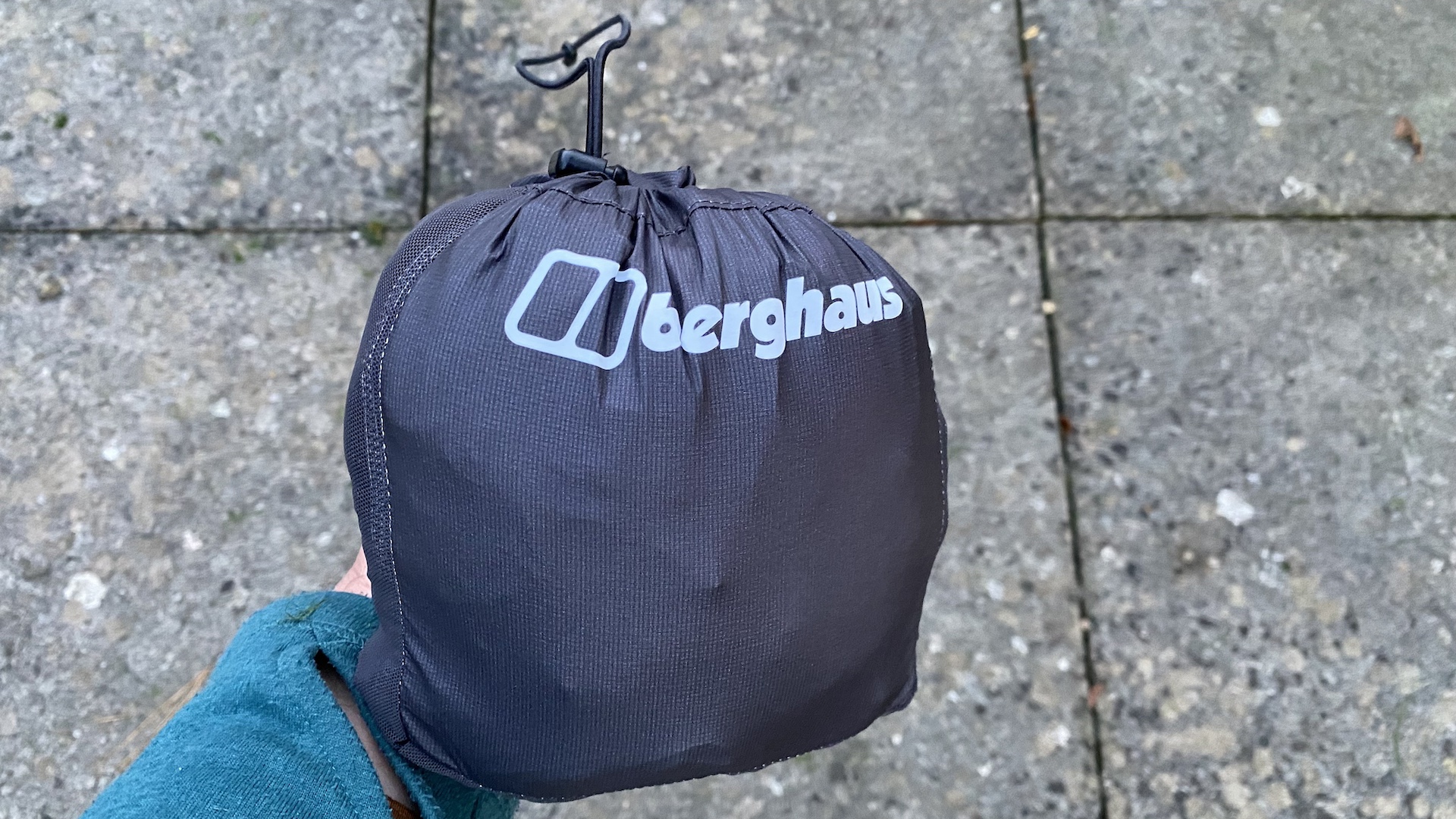
The jacket doesn’t stuff away into a pocket, like many similar coats do, but it does come with its own little carry sack so you can easily pop it into a hiking backpack or a daypack and take it along in case the weather turns against you. In fact, it’s so light and packable that it will even fit into a running vest or hydration pack, which makes it an excellent emergency layer for taking out on longer runs and ultra events, because it offers real warmth as well as protection from rain and wind.
Meet the reviewer
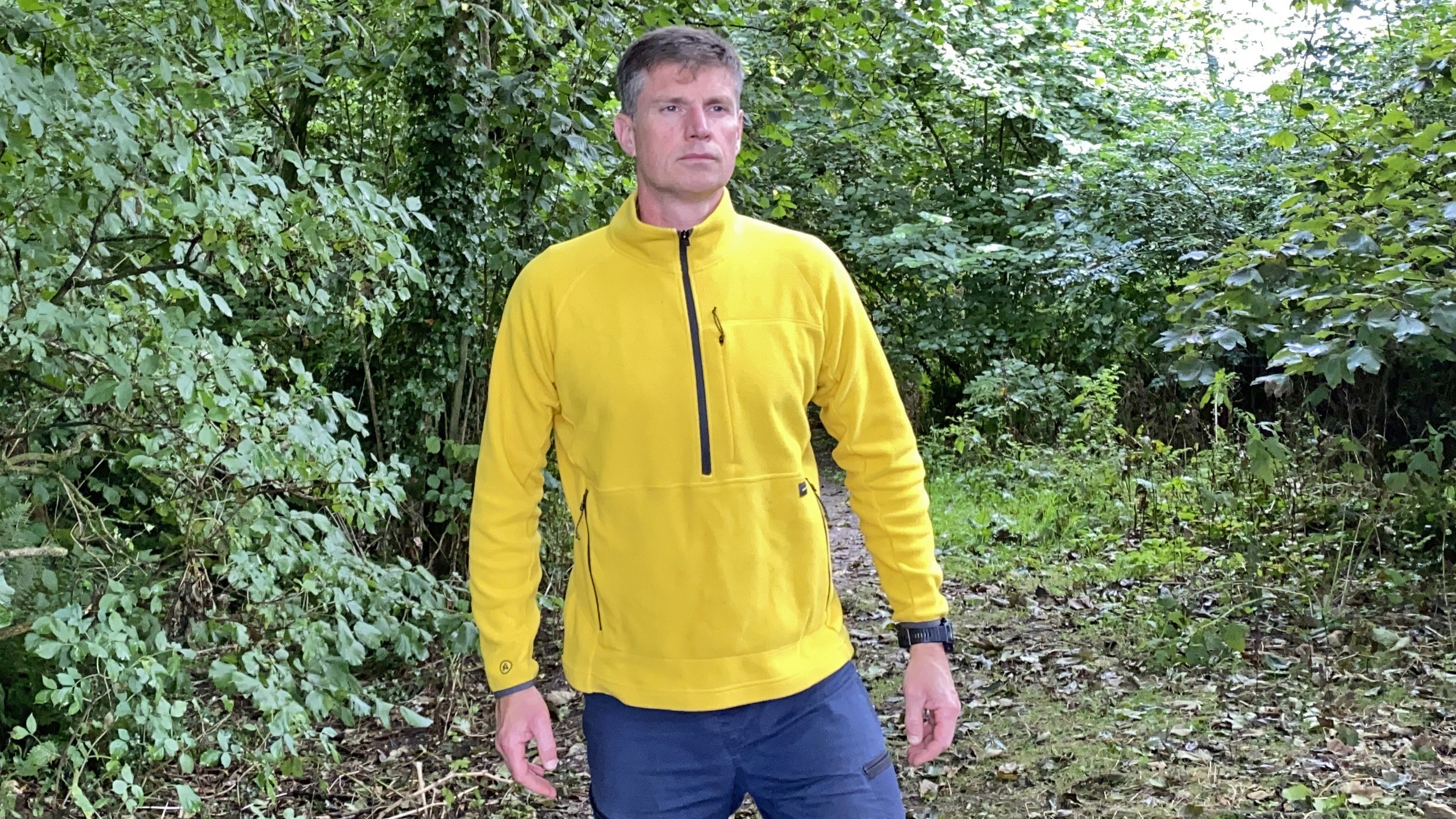
Pat has hiked all over the world, his adventures taking him to Mont Blanc, the roof of Western Europe; the Norwegian Alps; the highest peaks in Australia; and New Zealand’s Great Walks – among others. He’s an experienced tester of hiking gear and gives kit a thorough thrashing before reviewing.
Berghaus MTN Guide Hyper Alpha: on the trails

I’ve been wearing the Berghaus MTN Guide Hyper Alpha jacket while hiking, scrambling, running and climbing around the increasingly wet hills and crags of the South West of England. It’s the first time I’ve tested a garment made with Berghaus’s Hydroshell Elite fabric, and I’ve been impressed. I’ve had plenty of jackets with a higher hydrostatic head rating than this one offers, but it has proved reliably waterproof and windproof in all kinds of conditions. The fabric is lovely and quiet for a solidly weatherproof outer layer too – there’s no rustling or swishing sound as you swing your arms while walking or running, and it’s nice and soft too, so it doesn’t impede your movements whatsoever.
I’ve also found the jacket to be very breathable, somewhat to my surprise. I know the Hydroshell Elite fabric scores very well in breathability lab tests, but I did think the inclusion of the Polartec Alpha fleece panels might significantly impact that. So far as I can tell, although I do obviously feel warmer in this jacket than non-insulated shell layers, the breathability of the garment hasn’t been too badly affected.
The Polartec Alpha panels are truly intriguing. In my experience, they certainly provide an impressive degree of warmth, considering how minimalist they are, but they don’t completely remove the need to wear a proper fleece jacket when conditions get genuinely wintery. In one sense, this is the perfect shoulder-season jacket – a garment you can wear when you need to keep rain and wind chill at bay, but the temperature isn’t cold enough to warrant wearing a substantial mid layer and a shell jacket. Used like this, it also makes for an excellent winter running jacket. On the other hand, when the mercury really drops, you can layer up with a fleece along with this jacket for a whole extra level of warmth. That said, the fit of the jacket isn’t super spacious, so unless you size up you will struggle to fit a puffer mid layer beneath it.
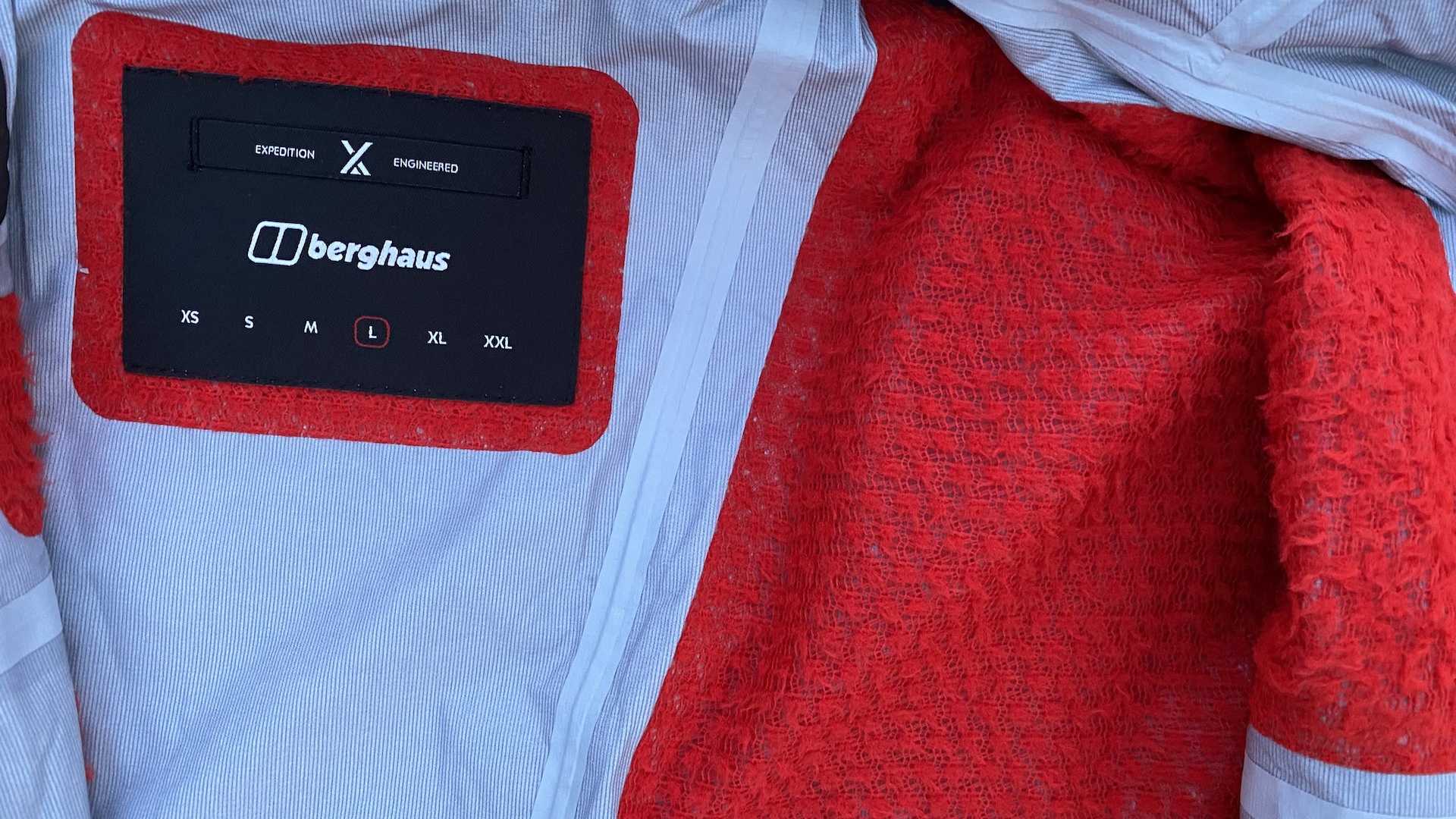
There are some downsides to the MTN Guide Hyper Alpha, though. Even with an anti-bacterial treatment, the fleecy insulation means it will collect odors more than other shell layers, and will therefore require more laundering. I’m not a huge fan of the basic elasicated cuffs (Velcro fasteners provide a more secure connection when you’re wearing hiking gloves) and I found the storm peak on the hood to be a bit flimsy.
I think there should be a reflective flourish somewhere on the rear of the jacket, for safety when you’re out on roads shared with vehicles, and while the separate stuff sack is good for storing and carrying the coat, I just know I’m going to misplace it pretty quickly, and I’d rather see a pocket being used for this purpose. And – my pet hate with waterproof jackets – it lacks pit vents, which are by far my favored way to control my temperature while wearing an outer shell during dynamic activity (although, I concede they do add weight and chunkiness, which this jacket is trying to avoid).
Overall, though, the MTN Guide Hyper Alpha is a really decent water- and wind-proof jacket that continues to breathe well, while offering a significant degree of thermal protection very few (if any) other shell layers supply. It performs well in the hills and weighs next to nothing whether you’re wearing it or carrying it. I feel it’s better for climbers and runners than hikers, but it’s a solid performer across a range of pursuits.

Author of Caving, Canyoning, Coasteering…, a recently released book about all kinds of outdoor adventures around Britain, Pat has spent 20 years pursuing stories involving boots, bikes, boats, beers and bruises. En route he’s canoed Canada’s Yukon River, climbed Mont Blanc and Kilimanjaro, skied and mountain biked through the Norwegian Alps, run an ultra across the roof of Mauritius, and set short-lived records for trail-running Australia’s highest peaks and New Zealand’s Great Walks. He’s authored walking guides to Devon and Dorset, and once wrote a whole book about Toilets for Lonely Planet. Follow Pat’s escapades on Strava here and Instagram here.
